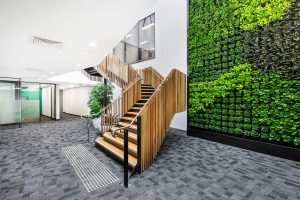Haven’t I seen this somewhere before?
Taren Hura, Interior Designer
There’s nothing worse than knee-jerk compliance – nothing. Have you ever been left with a gnawing doubt as you leave a design meeting? What about the ones
in which the designers have quickly agreed with all of your suggestions and assured you that it will be drawn up exactly as you’ve suggested.
There are some that are equally quick to dismiss these misgivings with an assurance that it was an efficient meeting – far too rare a commodity these
days and yet… something’s not right.
Later, you’re casting an eye over the designs and yes, it’s just as they said it would be (exactly as you’d suggested) but you are left overwhelmingly
underwhelmed. Your frustrations give way to annoyance when you realise that your team has simply done as they were told/asked/directed and nothing
more by an interior design novice – you. There’s nothing wrong with not being an interior designer, most people aren’t but it becomes a problem when you hire one who steadfastly refuses to push the envelope,
explore and even challenge you.
You need a challenge
I’m not saying that your work isn’t fulfilling and that the task of heading up your company’s office refurbishment project as well as your normal workload
isn’t enough. I mean that in many cases, people in your position will have hoped to be wowed with something you yourself had not and perhaps
could not have conceived. The unhappy flipside to “well done, that’s just what I asked for”, is “hmmm, I could have done that myself”. That’s a bit
overblown but to ignore this scenario is to ignore the real reason you engaged an interior designer in the first place. It’s also the reason you didn’t
hire an interior “arranger” to simply fill rooms with furniture and equipment.
While you, as the client-side project lead, will of course understand your brand, what it means and how it, along with your team, should be housed, you
should not be expected layout the pillars of a perfect design. A brief, yes, the design, no. Here’s what you should expect from your interior design
team:
- A challenge – by that I mean that the discussions and interactions you have with your design team should be a stimulating, two-way interaction
that opens the doors to possibilities, opportunities and new thinking. It should not be a trite recap or regurgitation of your initial brief with
said assurance that “we’ll take care of that for you.” Your business and your people deserve so much more than acquiescence and unquestioning obedience. - Unexpected solutions – you won’t have thought of everything because it’s not your job to. More often than you might believe, simple works are
built on complicated solutions. This is because a request for a “wall over there and a kitchen in here” could require a series of investigations,
due diligence and creative thinking to overcome unforeseen obstacles. It wouldn’t be the first time our team has come to a client explaining that
we’ve found an alternate solution for the kitchen location that saves us having to spend tens of thousands of dollars on “core hole cut-outs” for
example. - Flair/Magic/Awesomeness – let me be clear, awesome is a word that is absolutely and inappropriately overused these days, and has been for quite
some time. In these busy times, we too often settle for function over form or vice versa, shrug, smile and say, “awesome”. A design that actually
champions both form and function – beyond expectations – feels worthy of this decade’s favourite misnomer. - An enquiring mind – Inquisitiveness is often stifled by agreement and consensus. Even if, as a designer, I agree with a client’s suggestion,
I like to know why because I need to know what they hope to achieve. By asking why and understanding the endpoint, my years of experience and that
of my colleagues may result in a more effective way of arriving at the desired endpoint.
Obviously, this is not an extensive list but consider these as mandatory options instead of optional extras. Without them, you may just get exactly what
you asked for and nothing more. Which is exactly what you’d expect from a cookie-cutter, not an experienced and innovative interior designer.




